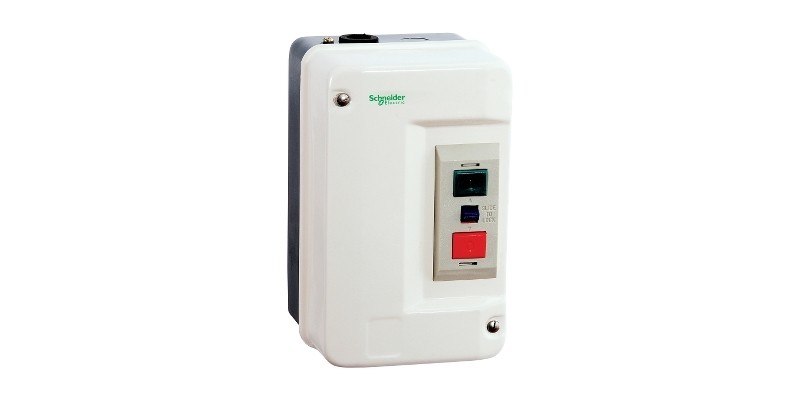An electric motor starter plays a significant role in making electric motors safe and efficient. Motor starters play a crucial role in electric motors’ efficient and safe operation. These essential devices help initiate and control the operation smoothly. Moreover, an electric motor starter offers valuable insights into its functioning and importance. In various industries, such as manufacturing and automation, they are critical for preventing sudden power surges and overloads. As a result, it protects the motor from damage while extending its lifespan and optimising energy consumption. Now, let’s learn more about understanding the basic of motor starters.
Essential Components of a Motor Starter
An electric motor is a complex machine requiring a starter, typically consisting of several key components. They are:
1.Contactor
The contactor is a key component of a motor starter, which functions as an electromagnetic switch. It allows or interrupts the flow of electrical current to the motor. When the motor is started, the contactor’s coil gets energised. As a result, it closes its contacts, thus, allowing electricity to flow through to the motor.
2. Overload Relay
It is a safety feature to protect the motor starters from overheating due to excessive current. It helps by monitoring the current passing through the motor. It opens the circuit if it detects a current beyond the specified limit. Thus, interrupting the motor and preventing any damage.
3. Control Circuit
The panel consists of various control elements that allow an operator to start, stop, and control the motor’s operation. This circuit includes push buttons, switches, timers, and relays. When the start button is pressed, for example, the control circuit sends a signal to the contactor, initiating the motor’s start-up process.
4. Start and Stop Buttons
These buttons are user-operated controls that initiate and halt the motor’s operation. When the start button is pressed, it sends a signal to the control circuit. This further activates the contactor initiating the process of motor starters. The stop button, when pressed, interrupts the circuit, stopping the motor.
5. Disconnect Switch
When working around electrical components, safety is the first priority. The disconnect switch is an essential safety feature that completely cuts off power to the motor. It is used during maintenance or emergencies to ensure that no electrical energy reaches the motor, preventing accidental starts.
6. Thermal Overload Elements
These are protective devices that respond to the motor’s temperature. The thermal overload elements open the circuit if the motor gets too hot. As a result, it helps prevent any overheating damage.
7. Fuses or Circuit Breakers
These components protect the motor starters and the circuit from short circuits or overloads by interrupting the electrical current. Fuses need to be replaced after they blow, while circuit breakers can be reset after tripping.
8. Terminal Blocks
Terminal blocks provide connection points for the various wires in the motor starters. They allow for organised and secure wiring and make installation and maintenance easier.
9. Coil
When the current is generated, a channel must pass through safely and smoothly. Therefore, coils are installed in the contactors as they generate a magnetic field that pulls the contactor’s contact together. As a result, it closes the circuit while allowing the current to flow towards the motor.
10. Auxiliary Contacts
These are additional contacts on the contactor that can be used to control other devices or provide feedback about the motor’s status. For example, they can be used to activate indicator lights or sound alarms when the motor is running.
How Selecting the Right Motor Starter Helps?
Motor starters follow a sequence of operations to ensure a safe and efficient start. When the start button is pressed, the control circuit sends a signal to the contactor, closing its contacts and allowing current to flow to the motor. While selecting a suitable electric motor starter, there are a few things to consider. It may include motor type, load requirements, operational environment, etc. Selecting the right motor starter, like VFDs and soft starters, helps in reducing power consumption during motor operation. As a result, it makes the process energy efficient and leads to saving utility costs over time.
Final Takeaway
Motor starters are indispensable devices that facilitate the efficient and safe operation of electric motors across various industries. Understanding them enables one to make informed decisions when selecting and using motor starters for various applications. So, if you want to purchase energy-efficient motor starters, connect with a reputable power solutions company that offers complete assistance.





